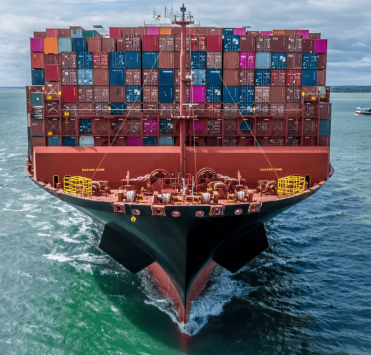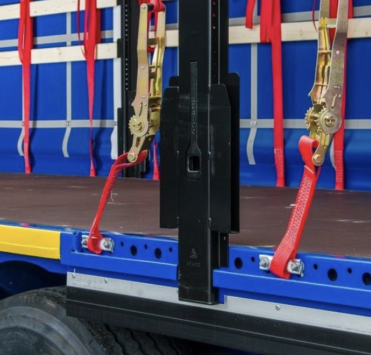How methanol and alcohols are transported: Standards and Requirements

Transportation of Alcohols by Road Transport is regulated by the European Agreement concerning the International Carriage of Dangerous Goods by Road (ADR), as alcohols such as methanol, ethanol, and isopropanol are classified as dangerous goods. This is due to their flammable properties, which impose additional requirements for transportation. Methanol, widely used in the chemical industry, is classified as a Class 3 hazardous material, requiring strict compliance with regulations at every stage of transportation.
The transportation of alcohols, including methanol, requires specialized tankers. These tankers are certified for the carriage of dangerous goods, comply with ADR requirements, and are equipped with thermal insulation to maintain the cargo’s temperature stability. Additionally, each tanker must display proper markings, such as orange plates and hazard codes, indicating the cargo class.
Special attention is given to driver preparation. The transportation of methanol and other alcohols requires drivers to hold a special ADR certificate, confirming completion of training in the carriage of dangerous goods. This enables them to handle the cargo correctly, minimize risks, and ensure safety measures in case of emergencies.
Classification and Hazard Classes of Alcohols
Alcohols are organic substances with a hydroxyl group (-OH) that find wide application in industries such as chemistry, pharmaceuticals, cosmetics, food production, and fuel energy. However, their physical and chemical properties, such as flammability and, in some cases, toxicity, require strict compliance with transportation standards. The transportation of alcohols, including methanol, is regulated by the European Agreement on the International Carriage of Dangerous Goods by Road (ADR).
Industrial alcohols such as ethanol, isopropanol, and butanol typically have high purity and concentration levels, making them particularly hazardous. These substances are classified as flammable liquids and fall under Class 3 dangerous goods according to ADR. Their high flammability when exposed to heat or fire sources necessitates strict safety compliance at all transportation stages.
Road Transport Classification of Alcohols According to ADR:
- Methanol (Methyl Alcohol):
Transportation is carried out under Class 3 (ADR 3), Subclass 3.2, and additional Subclass 6.1. UN Number: 1230. Methanol belongs to Packing Group II, indicating substances with a medium hazard level. - Isobutanol (Isobutyl Alcohol):
Transported under Class 3 (ADR 3). UN Number: 1212. Classified as Packing Group III, which indicates a low hazard level. - Ethanol (Ethyl Alcohol):
Regulated under Class 3 (ADR 3), Subclass 3.2. UN Number: 1170. Ethanol belongs to Packing Groups II and III, indicating medium and low hazard levels. - Propanol (Propyl Alcohol):
Transportation is regulated under Class 3 (ADR 3), Subclass 3.2. UN Number: 1274. It is classified under Packing Groups II and III, indicating medium and low hazard levels. - Isopropanol (Isopropyl Alcohol):
Governed by Class 3 (ADR 3). UN Number: 1219. Isopropanol is categorized under Packing Group II, identifying it as a substance with a medium hazard level. - Butanol (Butyl Alcohol):
Transported under Class 3 (ADR 3), Subclass 3.1. UN Number: 1120. Belongs to Packing Group III, indicating a low hazard level. - Pentanol (Amyl Alcohol):
Transported under Class 3 (ADR 3). UN Number: 1105. Categorized under Packing Group III, identifying it as a substance with a low hazard level.
Documents for the Transportation of Alcohols
The transportation of alcohol by road is a process requiring strict compliance with regulatory standards, especially since alcohol is classified as a dangerous good.
1. Cargo Documents
To transport alcohols, including methanol, the following documents are required:
- Safety Data Sheet (MSDS):
This is a mandatory document for the transportation of Class 3 dangerous goods (flammable liquids). It contains information on the composition of the alcohol, flash point, hazard class, and safety precautions. This is especially critical for transporting methanol in tankers, as methanol belongs to substances with a medium hazard level. - Cargo Quality Certificate:
For transporting food-grade or pharmaceutical-grade alcohol, a certificate confirming compliance with standards is required. This document is usually issued by the manufacturer or an accredited laboratory.
2. Vehicle Documents
Specialized tankers used for the transportation of alcohol must meet ADR requirements. The following documents confirm compliance:
- Certificate of Vehicle Approval for the Carriage of Dangerous Goods (ADR):
This document certifies that the tanker is equipped with thermal insulation, ventilation systems, and devices to prevent leaks and fires, which is particularly important for substances like methanol. - Tank Cleaning Certificate:
Before each loading, the tank must be thoroughly cleaned of any residue from previous cargoes. This prevents product contamination and ensures safe transportation.
3. Driver Documents
Drivers transporting alcohol must have specific training:
- Certificate of Completion of ADR Dangerous Goods Transport Course:
This document confirms the driver is trained in the specifics of transporting methanol and other alcohols, including safety measures and emergency response procedures. - Medical Certificate:
A valid medical certificate is required to confirm the driver’s fitness for handling high-risk goods.
4. Cargo and Vehicle Marking
The vehicle and containers carrying the cargo must be appropriately marked. Alcohols such as methanol, ethanol, and isopropanol fall under Class 3 dangerous goods. Marking includes:
- Orange hazard plates:
Examples:- UN 1170 – Ethanol
- UN 1219 – Isopropanol
- UN 1230 – Methanol
- Flammability Warning Signs:
These are mandatory for the safe transportation of methanol and other alcohols in tankers.
Requirements for Tank trucks Used for Alcohol Transportation
Transporting alcohol by road requires adherence to strict regulations and the use of specialized tankers that ensure cargo safety. These tankers are made from stainless steel and have unique design features necessary for handling liquid bulk cargo.
Preparation of Tankers Before Transportation:
- Tank Cleaning:
All residues from previous cargoes must be completely removed. Both mechanical and chemical cleaning methods are used, followed by rinsing with water. - Filling Capacity:
Tankers are typically filled to 90–95% of their capacity to allow for the thermal expansion of alcohol, especially during transport in varying temperature conditions.
Technical Specifications of Tank trucks
To ensure safe and efficient alcohol transportation, tankers must meet the following requirements:
- Material and Sealing:
- Tanks are made from stainless steel (L4BH), resistant to alcohols and chemical substances.
- The sealing of tanks prevents leaks and protects the cargo from external influences.
- Thermal Insulation:
- Tankers have thermal insulation to maintain a stable temperature during transportation, which is particularly important in winter.
- Discharge Hoses:
- For unloading convenience, hoses must be at least 10 meters long, allowing operations even in restricted access conditions.
- Safety Features:
- Tanks are equipped with pressure-relief and breather valves to prevent overpressure or vacuum inside the container.
- Each vehicle is supplied with a functional fire safety kit for emergency response.
- Cargo Segmentation:
- Some tankers are equipped with multiple compartments (up to 5), enabling the simultaneous transportation of different types of alcohol. Each compartment is marked according to the type of cargo, with appropriate labels placed in visible locations.
How Much Does It Cost to Transport Alcohol in Tankers?
The cost of transporting alcohol in a tanker depends on several factors, including the route, cargo volume, loading specifics, and vehicle requirements. A precise quote requires detailed information about the cargo parameters and transportation conditions.
Save Pro Solutions specializes in transporting various alcohols in tankers that meet the stringent requirements of the European chemical industry. Our tankers range from 26 to 32 m³ in volume and can carry up to 25 tons of cargo. We handle the entire logistics process, from selecting the appropriate vehicle to overseeing all stages of delivery.
Contact us, and we’ll ensure reliable and safe transportation of your cargo, considering all specific requirements and regulations.









